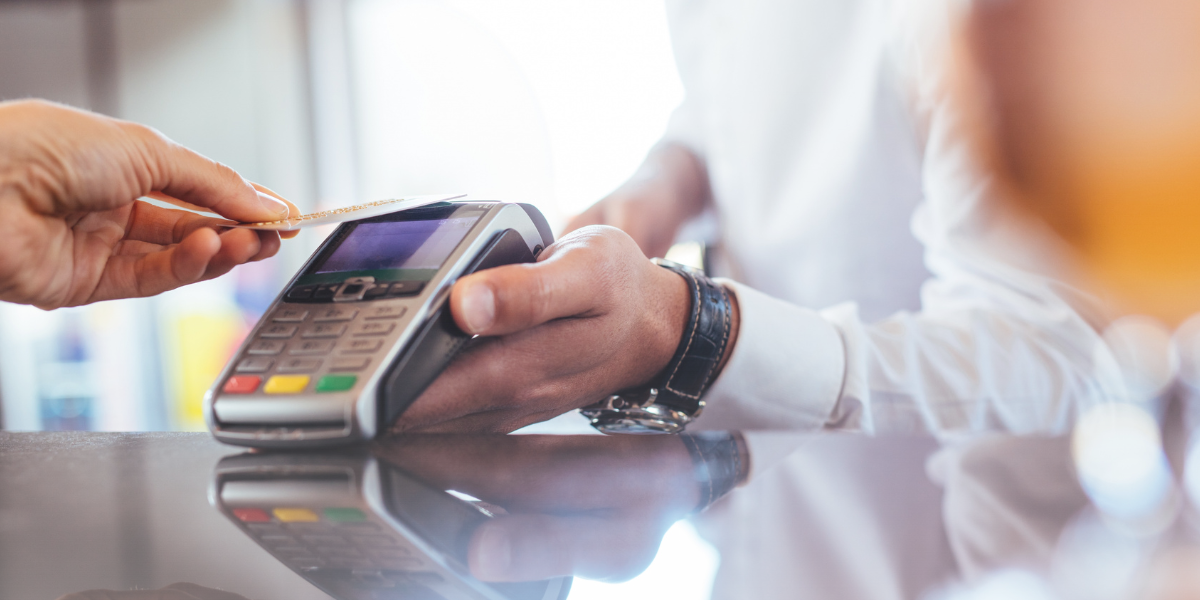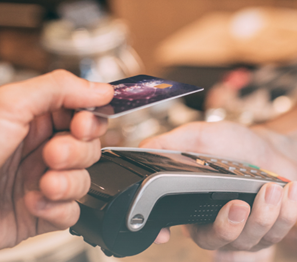
Swipe, tap and thrive: Why every single-location restaurant needs a POS
Learn why a POS system is essential for small quick service restaurants and which features help streamline orders, boost sales, and keep your café running smoothly.

Cashless payments are reshaping how businesses operate and how customers shop. This shift towards electronic transactions eliminates the need for physical cash, offering faster, more convenient and highly secure ways to complete purchases. Businesses that integrate cashless payment solutions can meet changing customer expectations, streamline operations and improve overall efficiency.
Understanding the methods and technologies behind cashless payments is big for businesses aiming to stay competitive. From credit and debit cards to mobile wallets and contactless payments, these systems enhance the checkout experience and provide advanced security features to protect sensitive information. Exploring the benefits, processes and tools available for cashless transactions gives businesses the knowledge to effectively embrace this newer aspect of modern commerce.
Cashless payments refer to transactions that do not involve physical currency, relying instead on electronic methods to transfer funds from one party to another. These payments are facilitated through different technologies, including credit and debit cards, mobile wallets, online banking and contactless payment systems. Cashless payments aim to provide a fast, secure and seamless transaction experience for both businesses and customers.
This payment method is becoming popular across industries due to its convenience and efficiency. Customers benefit from cashless payments by avoiding the need to carry cash, which can be inconvenient or prone to loss. Businesses gain the advantage of streamlined operations, reduced risks associated with cash handling and access to real-time transaction data for better financial management.
Cashless payment systems also incorporate robust security features like encryption and tokenization to protect sensitive customer data. These technologies help prevent fraud and build trust, ensuring that transactions are processed safely. As digital payment options expand, cashless payments are emerging as a cornerstone of modern commerce, offering a flexible and scalable solution for businesses of all sizes.
Understanding the different types of cashless payments can help you decide which methods to integrate into your business operations. Here are the primary forms of cashless payments:
Credit and debit cards are the most common forms of cashless payments. These cards are widely accepted by merchants worldwide and offer a quick, secure way to pay. Customers can swipe, insert or tap their cards to make payments. Credit cards allow users to borrow up to a certain limit to make purchases or withdraw cash, while debit cards deduct money directly from the user's bank account. Both options provide convenience and security, with features like fraud protection and rewards programs.
Cryptocurrencies like Bitcoin and Ethereum represent a decentralized approach to cashless payments, offering an alternative to traditional banking systems. These digital currencies operate on blockchain technology, ensuring transaction transparency and security. Cryptocurrencies can be used for a variety of transactions, from online purchases to investment opportunities. While still relatively new and subject to market volatility, cryptocurrencies are gaining acceptance in various sectors, providing a unique and modern payment option.
One of the most significant advantages of cashless payments is convenience. Customers no longer need to carry cash or worry about having the exact change. With a simple tap or swipe, transactions are completed in seconds, making the checkout process faster and more efficient.
Cashless payments offer enhanced security compared to cash transactions. Digital payments are encrypted and often require authentication, such as a PIN or biometric verification, reducing the risk of theft and fraud. Additionally, losing a wallet full of cash can be devastating, but losing a credit card or mobile device can be mitigated by quickly reporting and blocking the card or device.
For businesses, cashless payments streamline operations. Handling cash involves counting, storing and transporting money, which can be time-consuming and prone to errors. Digital payments, on the other hand, are automatically recorded and processed, simplifying accounting and reducing the risk of discrepancies.
Accepting cashless payments can increase sales. Customers are more likely to make impulse purchases when they can pay quickly and easily. Additionally, offering multiple payment options caters to a broader audience, including those who prefer using digital wallets or contactless payments.
A common concern among businesses and consumers is the security of digital transactions. It's essential to choose a reputable payment processing provider that adheres to industry standards for data security. Moneris, for example, offers robust security measures to protect your business and customers from fraud.
Switching to a cashless payment system can seem daunting, but the benefits outweigh the challenges. Start by evaluating your current payment processing setup and identifying areas for improvement. Look for a provider that offers comprehensive support and training to ensure a smooth transition. Moneris provides 24/7 customer support and onsite assistance to help businesses make the switch seamlessly.
Another concern is the cost associated with cashless payments. While fees are involved, such as transaction fees and equipment costs, the efficiency and increased sales potential often offset these expenses. Additionally, many providers offer scalable solutions that can grow with your business, ensuring you only pay for what you need.
Selecting the right payment processor is important for successfully transitioning to cashless payments. Look for a provider with a proven track record, excellent customer support and a range of payment options. Ensure they offer secure and reliable services that meet your business's needs.
Proper training is essential to ensure your staff can handle cashless transactions efficiently. Provide comprehensive training on using the new payment systems, troubleshooting common issues and assisting customers with digital payments.
Educate your customers about the benefits of cashless payments and encourage them to use these methods. Display clear signage at your point of sale, highlighting the available payment options. Consider offering incentives, such as discounts or loyalty points, for customers who choose cashless payments.
Once you've implemented cashless payments, continuously monitor the system's performance and gather feedback from your staff and customers. Use this information to make necessary adjustments and optimize the payment process for a seamless experience.
The trend towards cashless payments is expected to grow, driven by technological advancements and changing consumer preferences. Innovations such as biometric authentication, blockchain technology and the Internet of Things (IoT) are set to further enhance the security and convenience of digital transactions.
Biometric authentication, such as fingerprint and facial recognition, is becoming more popular for securing digital payments. This technology offers a higher level of security by ensuring that only the authorized user can complete a transaction.
Blockchain technology provides a secure and transparent way to process transactions, making it an attractive option for payment processing. Cryptocurrencies, which operate on blockchain technology, offer a decentralized and digital currency that can be used for transactions, providing an alternative to traditional banking systems.
The IoT is revolutionizing the payment landscape by enabling connected devices to facilitate transactions. For example, smart refrigerators can automatically reorder groceries and make payments, while wearable devices like smartwatches can be used for contactless payments.
Moneris is a Canadian payment processing company committed to helping businesses of all sizes accept digital payments and provide a seamless and convenient payment experience. Moneris ensures your business can thrive in the cashless economy by leveraging the latest technologies and offering comprehensive support. Embrace the future of payments and explore the benefits of cashless transactions for your business today.

Learn why a POS system is essential for small quick service restaurants and which features help streamline orders, boost sales, and keep your café running smoothly.

Discover the best POS systems for small retail businesses. Learn how to streamline inventory, boost sales, and improve customer service with the right POS solution.

Learn what card testing fraud is, how it targets your e-commerce site, and the best practices you can use to detect, block, and prevent attacks before they impact your business.

What is contactless payment and how does contactless payment work? Discover how this technology speeds up transactions and improves customer experience with secure, fast processing. Learn what contactless payment is and how contactless payment works to streamline transactions. Find out how it benefits your business with faster and more secure payments.